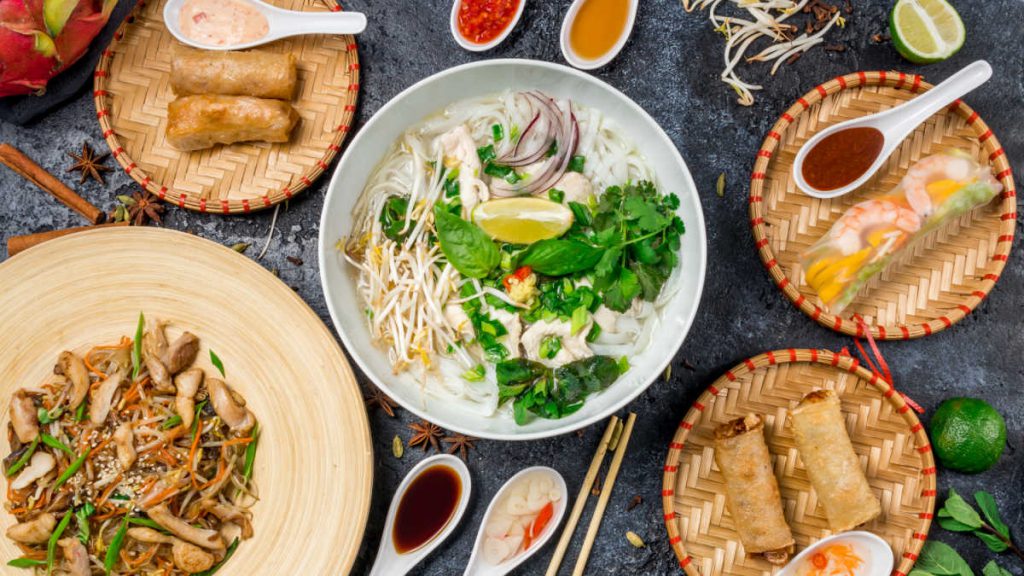Embrace Green Travel: Over 5,000 Sustainable Stays Await You in Vietnam!
Hi there, fellow globe-trotters! If you’re planning an adventure in Vietnam and sustainability is your jam, you’re in for a treat. According to the widely
The misconception that consuming food anywhere in Asia could cause illnesses and digestive issues was once prevalent. However, this notion no longer holds true, especially when we consider Vietnam—a country that has undergone significant changes when it comes to food safety in both restaurants and street food venues.
It’s essential to understand that bacteria and microorganisms exist universally, and visiting any new environment exposes you to a new microbial landscape. This exposure allows your body to adapt to the local community, climate, and food. This reality, however, should not be mistaken for the unfounded beliefs about Vietnam’s food safety issues.
The contemporary and forward-thinking culture that pervades Vietnam requires us to reevaluate these antiquated beliefs and debunk them for good. Today’s Vietnam is far from being a high-risk zone for food consumption.
Let’s address some of the myths that are no longer applicable in Vietnam:
The advice against eating salad is unfounded. The concern stems from the belief that salads, being uncooked and washed with local water, carry harmful contaminants. The truth is, the water quality, particularly in major cities, is up to standard. Exceptions do exist where old pipes might be used, but overall, salads and other raw food items are typically safe to consume in Vietnam. Personal experiences can further attest to this.
The assertion that chicken and duck are riddled with salmonella is also incorrect. Poultry is typically processed and consumed within the same day, sometimes within hours, guaranteeing fresh and safe food. Interestingly, foodborne illnesses can sometimes trace back to western-style restaurant chains that follow supposedly safer food management processes.
The belief that meat is not refrigerated is indeed true. But, given the local practice of processing, selling, and cooking the meat within hours, the freshness of the meat is ensured.
The advice against drinking water is partly valid. Though the water quality is generally acceptable in most parts of Vietnam, filtered water is always a safer bet. Applying the same precautions as you would in your home country, such as boiling water or using in-line filters, is a sensible approach.
The rumor about seafood being artificially preserved with chemicals to appear fresh is also false. Vietnam’s seafood industry is colossal, catering not only to domestic consumption but also exporting to countries worldwide. Strict standards are in place to meet the import rules of regions like the European Union and Australia. Most seafood in local eateries is fresh, prepared and cooked right before serving, making Vietnam’s seafood among the world’s freshest and cleanest.
The real challenge in Vietnam is knowing where it’s safe to eat. A simple yet effective rule is to dine where the locals do. Locals will not give poorly maintained eateries or street sellers a second chance, and they’re often more than willing to recommend good places to eat.
Furthermore, don’t be fooled by the size or appearance of a restaurant. A popular international brand does not always equate to guaranteed food safety. In fact, small local vendors often provide fresher, cleaner, and safer food. Even places that may not seem attractive on the outside often serve some of the most delightful culinary experiences.
Unfamiliar customs, such as discarding food remnants on the floor after eating, might seem off-putting to Westerners. However, this practice prevents fresh food from coming into contact with leftovers, ensuring a safer and cleaner dining environment.
Street food may seem daunting to some, but it’s a popular and safe way to enjoy local meals in Vietnam. The utensils are clean, and the food is prepared and preserved safely.
Vietnam enforces food safety regulations just like any other country, with penalties for non-compliance. With a population of over 100 million and thousands of food establishments, the rate of food-related incidents is remarkably low.
The quality of food in Vietnam is high, and I urge you to immerse yourself in the country’s vibrant food culture. Don’t allow the unfounded fear of illness to keep you from tasting some of the world’s best food. Good food vendors base their businesses on reputation and the quality and safety of their meals.
Embrace the adventure. Explore lesser-known paths, and indulge in memorable culinary experiences in Vietnam.

Hi there, fellow globe-trotters! If you’re planning an adventure in Vietnam and sustainability is your jam, you’re in for a treat. According to the widely
The misconception that consuming food anywhere in Asia could cause illnesses and digestive issues was once prevalent. However, this notion no longer holds true, especially
After being picked up from your hotel in Ho Chi Minh City, your tour begins with the 60 km drive to the Cu Chi tunnels, located in the countryside, where you can see rice fields along the way and see ducks and water buffaloes swimming in the rivers.
The tunnel networks stretch for more than 200 km and were used by the Vietcong during the Vietnam War for hiding, communication, storage, medical care and much more. You explore the site, see remnants of the battle and try to visualize this now peaceful environment as a war zone.
You will also visit a nearby rubber plantation. When the time is up, you will be transferred back to Ho Chi Minh City and dropped off back at your hotel at the end of the tour.